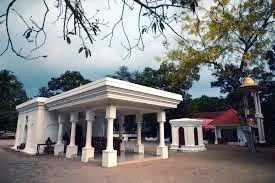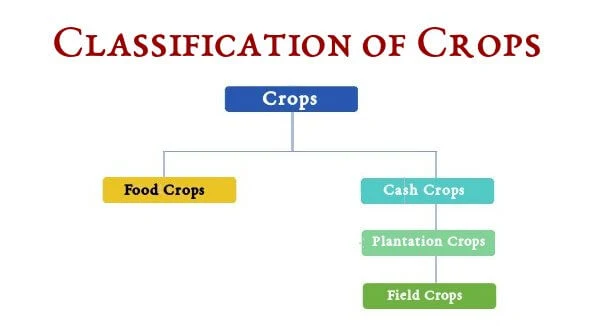Sree Narayana Guru
(1855 – 1928)
Let's have a bird's eye view on his life and the various activities he was involved in his lifetime for various Kerala PSC exams.
Basic Facts
- Birth – August 28, 1855 (ചതയം 1032 ചിങ്ങം 14) Chempazhanthy, Thiruvananthapuram.
- Family – Vayalvaram Veedu (വയൽവാരം വീട്).
- Parents – Madan Asan & Kuttiyamma (മാടനാശാൻ & കുട്ടിയമ്മ).
- Sisters – Kochu, Thevi & Matha.
- Wife – Kaliyamma (1882).
- Childhood name – Narayanan (Nanu).
- Death – September 20, 1928, Varkala, Thiruvananthapuram.
- Epithets – Father of Kerala Renaissance, Buddha of Kerala, Periya Swami (by Dr. Palpu), Second Buddha (by G. Sankara Kurup).
- Philosophy – One Caste, One Religion, One God for All (from "Jathi Mimamsa").
- Famous Words –
- “ജാതിഭേദം മതദ്വേഷം ഏതുമില്ലാതെ സർവ്വരും സോദരന്വേന വാഴുന്ന മാത്യകാ സ്ഥാനമാണിത്.” (inscribed on the walls of Aruvippuram temple, from "Jathi Nirnayam").
- “മദ്യം വിഷമാണ്, അതുണ്ടാക്കരുത്, കൊടുക്കരുത്, കുടിക്കരുത്.”
- “സംഘടിച്ചു ശക്തരാകുവിന്.”
- “വിദ്യ കൊണ്ട് പ്രബുദ്ധരാവുക.”
- “മതമേതായാലും മനുഷ്യന് നന്നായാല് മതി.”
- “ശുചിത്വം അടുക്കളയില് നിന്ന് തുടങ്ങുക.”
- Teachers –
- Moottha Pillai Asan (1871).
- Kummanpallil Raman Pillai Asan of Varanapally, Mavelikara (1877).
- Perunnalli Krishnan Vaidyar – basics of Tamil & Sanskrit, Amarakosam Balaprobhodhanam & Siddharupam.
- Thycadu Ayya – Hadayoga Vidya, Nauli, Dhoudi, Khadam & Khechari mudra.
- Enlightenment – Pillathadam Cave in Maruthwamala in Kanyakumari, Tamilnadu.
- Books – 45
- Malayalam –
- Aathmopadesh Shathakam (ആത്മോപദേശശതകം),
- Adwaitha Deepika (അദ്വൈത ദീപിക),
- Arivu (അറിവ്),
- Athma Vilasam (ആത്മ വിലാസം),
- Bhadrakaalyashtakam (ഭദ്രകല്യാഷ്ടകം),
- Chijjada Chintanam (ചിജ്ജഡ ചിന്തനം),
- Daivadasakam (ദൈവദശകം),
- Daiva Vichinthanam – 1 & 2 (ദൈവ വിചിന്തനം),
- Dharma (ധർമ്മഃ),
- Gajendra Moksham Vanchipattu (ഗജേന്ദ്ര മോക്ഷം വഞ്ചിപ്പാട്ട്) (Sree Narayana Guru dedicated Gajendra Moksham Vanchipattu & Navamanjari to – Chattambi Swami)
- Jeevakarunya Panchakam (ജീവകാരുണ്യപഞ്ചകം),
- Jaathi Nirnayam (ജാതി നിർണയം),
- Jaathi Lakshanam (ജാതി ലക്ഷണം),
- Kolatheereshastavam (കോലതീരേശസ്തവം),
- Mangalasamsa (മംഗളാശംസ),
- Navamanjari (നവമഞ്ജരി),
- Sree Krishnana Darsanam (ശ്രീകൃഷ്ണദർശനം),
- Vedantha Suthram (വേദാന്ത സൂത്രം).
- Kali Natakam (കാളിനാടകം).
- Sanskrit –
- Dharsanamala (ദര്ശനമാല).
- Tamil –
- Thevarappathinkangal (തേവാരപ്പതികങ്കൾ).
- Translations –
- Thirukural (തിരുക്കുറൾ),
- Isavasyoupanishad (ഈശാവാസ്യോപനിഷത്ത്),
- Ozhivil Odukkam (ഒടുവിലൊഴുക്കം).
As a social reformer, he fought against the untouchability and social inequality prevailed in society at that time and was successful in shooking the great pillars of the conservatism of the Brahmin upper class, and ultimately succeeded in uniting the illiterate and downtrodden backward classes.
Temples & Sree Narayana Guru
- Total no. of temples are consecrated by Guru – 43.
- 1888 – Consecration of a Sivalinga at Aruvippuram, Neyyattinkara on the banks of Neyyar river in the month of March.
- Installation of idols in temples was done only by Brahmins through generations when Guru installed Sivalinga, this angered the Brahmin community greatly and that event eventually led to the ‘Aruvippuram revolution’.
- Famous quote – "I consecrated the Ezhava Shiva and not the Brahmin Shiva."
- “ജാതിഭേദം മതദ്വേഷം ഏതുമില്ലാതെ സർവ്വരും സോദരന്വേന വാഴുന്ന മാത്യകാ സ്ഥാനമാണിത്” (inscription on the walls of Aruvippuram temple)
- Book written during Consecration of temple at Aruvippuram – Siva Satakam (ശിവശതകം).
- 1889 – Built Mannanthala Devi Temple.
- 1895 – Establishment of a mutt and temple at Muttakkadu near Kovalam.
- 1899 – Consecration of Subramanya Idol at Kunnumpara, near Kovalam.
- 1904 – Establishment of Sivagiri Mutt at Varkala.
- 1908 – Installation of Sree Jagannatha Temple prathishta (idol) at Thalaserry.
- 1909 – Guru established Thiruppatheeswara temple at Mangalapuram (Mangalore)
- 1912 – Built a temple of Sarada Devi (ശാരദമഠം) at Sivagiri
- 1913 – Advaita Ashramam at Aluva.
- The motto of Advaitha Ashramam – Om Sahodaryam Sarvatra (ഓം സാഹോദര്യം സർവത്ര).
- 1915 – Conference held at the Advaitha Ashramam with the message ‘‘One Caste, One Religion, One God for Man.’’
- 1924 – Held All religions' Conference (സർവ്വമതസമ്മേളനം).
- First-ever All religions' Conference in India.
- Chairman of All religions' Conference – Justice Sivadasa Iyer.
- Famous Slogan – ‘‘No to argue and succeed, but to know and make others understand” (വാദിക്കാനും ജയിക്കാനുമല്ല, അറിയാനും അറിയിക്കാനും) was written at the main entrance of the religions conference held at the Advaita Ashramam.
- 1916 – Established Sree Narayan Seva Ashram at Kanchipuram.
- 1920 – Consecration of a temple (Vilakkambalam) at Karamukku, Thrissur with "nilavilaku" as an idol.
- 1922 – Built a temple at Murukkumpuzha and consecrated without an idol but with a mere inscription of "Truth, Dharma, Love, Mercy."
- 1927 – Consecration of a temple at Kalavamkodam with a mirror with the message "Om Shanthi" written on the surface on June 14.

Idol Consecrations
- Mirror – Kalavancode, Karamukku, Murukkumpuzha, Ullala, & Vengoor.
- First Mirror consecrated Temple – Kalavancode.
- The last temple consecrated by Sree Narayana Guru – Ullala.
- Vilakku – Karamukku, Murukkumpuzha.
- Idol of Saraswathi – Varkala. (Previous Year PSC Questions: Assistant Professor in Physiology, 2019)
- Idol of Subramanya – Vakkom Subramanya Swami Temple (also known as Velayudhan Nada).
SNDP (Sree Narayana Dharma Paripalana Yogam)
Later in 1898, Vavoottu Yogam was expanded and Aruvippuram Kshetra Yogam was formed. In 1903 (1078 ധനു 23), a special meeting of Aruvippuram Kshetra Yogam was conducted and they decided to change it into a larger yogam.
Thus on 1903 May 15 (1078 ഇടവം 2), it was registered as Aruvippuram Sree Narayana Dharma Paripalana Yogam according to the Indian Companies Act, No.6, 1882.
- Headquarters – Kollam.
- First President & permanent Chairman of SNDP – SreeNarayana Guru.
- First Secretary of SNDP – Kumaranasan.
- First Vice President of SNDP – Dr. Palpu.
- First Annual General Body meeting at Aruvipuram – February 1904.
- Journal Published by SNDP – Vivekodayam (1904, by Kumaranasan & M. Govindan).
- First Editor – Kumaranasan.
- Official Editor – M. Govindan.
- Popularly known as 'Ezhava Gazette.'
- Vivekodayam is now replaced by Yoganadam.
Another organization formed by Sree Narayana Guru for the social upliftment of Ezhava society was the Sree Narayana Dharma Sangam which was on January 9, 1928.
Sivagiri Pilgrimage / Sivagiri Theerthadanam
- Conducted from – 30 December to 1st January.
- The idea of Sivagiri pilgrimage was conceived by – Vallabhasseri Govindan Vaidyar & T. K. Kittan Writer.
- Guru gave approval for Sivagiri Pilgrimage on – January 1928.
- It started at the Village of Elavumthitta (Pathanamthitta).
- The SNDP Unit No.76 selected 5 youngsters for the pilgrimage.
- Dress code for Pilgrims – Bright Yellow.
- The pilgrims were reciting – 'Swaathanthrya Gadha' (written by Kumaranasan).
First Pilgrimage –
📌 Read More: Previous Year Repeated PSC Questions on Sree Narayana Guru
Famous Meetings with Sree Narayana Guru
- 1882 – Chattambi Swamikal at Anniyoor Temple, Thiruvananthapuram.
- 1891 – Met Kumaranasan at Kayikkara.
- 1895 – Dr. Palpu met Sree Narayana Guru in Bangalore.
- 1912 – Met Ayyankali at Balaramapuram.
- 1914 – Vagbhatanandan.
- 1916 – Ramanamaharshi at Thiruvannamalai.
- 1922 – Tagore on November 22 at Sivagiri (Translator – Kumaranasan).
- "I have been touring different parts of the world. During these travels, I have had the fortune to come into contact with several saints and maharishis. But I have frankly to admit that I have never seen one who is spiritually greater than Swamy Narayana Guru of Malayalam- nay, a person who is on par with him in spiritual attainment. I am sure, I shall never forget that radiant face illuminated by the self-effulgent light of divine glory and those majestic eyes fixing their gaze on a far a remote point in the distant horizon.”
Tagore's writings about Guru after his visit –
Notable Disciples
- Sree Bodhnanda Swamikal
- The official successor of Sree Naryana Guru (Guru registered his will in his name).
- Became Sanyasa disciple in 1912, on the third day of Sharada idol installation.
- Established Narayana Gurukulam at – Nilgiri Hills (1923).
- Narayana Gurukulam was later handed over to – Nataraja Guru.
- Established Cochin National Bank.
- Published “Sree Narayana Dharmam” codifying the Guru's precept on “Caste, Religion, Morality, Celibacy, and Household duties.
- Attained Samadhi 3 days after Guru.
- Nataraja Guru.
- Kumaran Asan.
- Dr. Palpu.
- Sahodaran Ayyappan.
- First sanyasa disciple – Sivalinga Swamikal.
- Last sanyasa disciple – Andatheertha Swamikal.
- First European disciple – Ernest Kirk.
Works on Sree Narayana Guru
- First Biography of Sree Narayana Guru was written by – Moorkoth Kumaran.
- “Guru” – K. Surendran.
- “Gurudevakarnamritham” – Kilimanoor Kesavan.
- “Maharshi Sree Narayana Guru”, “Brahmarshi Sree Narayana Guru” – T. Bhaskaran.
- *English translation of “Brahmarshi Sree Narayana Guru” – A.J. Thomas.
- *Tamil translation of “Brahmarshi Sree Narayana Guru” – Vijayakumar Kunnissery.
- *Hindi translation of “Brahmarshi Sree Narayana Guru” – H. Balasubramaniam.
- “Narayanneyam” – Perumbadavam Sreedharan.
- “Narayanaguruswami” – Prof. M. K. Sanu.
- “Sree Narayana Dharma” – Bodhananda Swamikal.
- "Yugapiravi" – K. Vasudevan.
- Sree Narayana Guru (Film, 1985) – P.A.Backer (Director).
- Yugapurushan (Film, 2010) – R. Sukumaran (Director).
- Thalaivasal Vijay played the role of Guru in it.
- English translation of "Atmopadesa Sathakam" – Nataraja Guru.
Statues, Institutes & Boat races
- The first statue of Guru was erected at – Jagannatha Temple, Thalassery (1927).
- Made of – Panchaloha.
- Installed on – 13 March 1927 under the aegis of Moorkoth Kumaran.
- Installed by – Bodhananda Swamikal.
- Sculptor – Professor. C. Thavarli (Italian).
- Sree Narayana Trust – R. Sankar (Kollam, 1952).
- Sree Narayana Vidyalayam – Swami Anandatheertha (Payyanur).
- International Center for Sree Narayana Guru, Sree Narayana Mandira Samiti – Navi Mumbai, Maharashtra.
- Sree Narayana Jayanti Boat Race – Kumarakom, Kottayam.
- Sree Narayana Trophy Boat Race – Kannetti Kayal, Karungapally.
📝SideNotes:
- Guru's Guru – Thycadu Ayya.
- Travancore's King during the birth of Sree Narayana Guru – Uthram Thirunal Marthanda Varma.
- First work of Sree Narayana Guru – Gajendra MokshamVanchipattu.
- Only Keralite whose birthday and death anniversary is declared as a holiday by the Government of Kerala.
- Only Person who was exempted from court appearances in civil cases by the Govt. of Travancore.
- First Malayali to appear on an Indian stamp – Sree Narayana Guru (August 21, 1967).
- First Malayali to appear on a foreign country stamp – Sree Narayana Guru (Sri Lanka, 2009).
- First Malayali to be inscribed on a coin of RBI (to commemorate his 150th birthday) – Sree Narayana Guru (2006).
- Sree Narayana Guru started a school at – Anchuthengu (1881).
- Misrabhojanam under the Guru's guidance was done on – 1915.
- Guru’s last public function was at – Palluruthi (1927).
- The only foreign country visited by Sree Narayana Guru – Sri Lanka (1918-1923).
- The early works of Sree Narayana Guru were published in – Kerala Kaumudi.
- Founder of the Newspaper ”Kerala Kaumudi” in (Mayyanad, Kollam) 1911 in order to propagate the ideals of Sree Narayana Guru – C.V. Kunjiraman.
- Who introduced Narayana Guru’s visions and ideas to the Western World? Nataraja Guru.
- Dr. Palpu called Kumaranasan as – Chinnaswamy.
- *As a part of the National Academy of Letters project in 2011 for translating the book “Brahmarshi Sree Narayana Guru” into 23 languages including English.
- First Sree Narayan Guru Global Secular & Peace Award was given to – Dr. Shashi Tharoor (2013).
- Which temple's foundation stone was laid by Annie Besant and was consecrated by Sree Narayana Guru? Sreekanteswara Temple (Kozhikode).







Post a Comment
Post a Comment